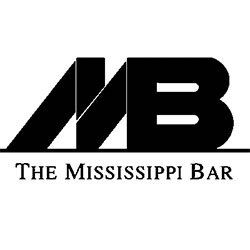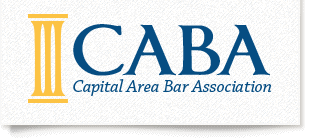PRACTICE AREAS
SUBSCRIBE TO OUR BLOG
SUBSCRIBE TO OUR BLOG
We will get back to you as soon as possible.
Please try again later.
ASSOCIATIONS
Madison County Bar Association
Piercing the Corporate Veil

Pay no attention to that man behind the curtain!
The phrase “piercing the corporate veil” refers to a legal remedy whereby a party injured by the acts of a business entity (such as a corporation or limited liability company) can impose personal liability on the owners of that entity.
Let us just use the term “company” to refers to such business entities.
Generally, the law considers a company to be separate and distinct from its owners. Thus, the fact that an party has a valid claim against the company does not necessarily mean he has a claim against the owners of the company.
For example, Party A might enter into a contract with Company ABC. If the Company breaches the contract, Party A can sue the Company, but he usually will not be able to sue the owners for breach of contract.
Similarly, Party B might be involved in an automobile accident caused by an employee of Company XYZ. Party B can sue the Company, but not the owners.
This is significant because when the injured party has a large monetary claim against the Company, the owners often walk away from the Company and allow it to become insolvent. In such a situation, the injured party may end up with a worthless “paper judgment” against the Company.
As a result, the courts have created a remedy called “piercing the corporate veil.” When certain conditions are met, and to avoid fraud or other extreme injustice, the courts will allow an injured party to “pierce” through the company to impose liability on the owners.
This doctrine was just recently addressed by the Mississippi Court of Appeals in Home Solutions of Mississippi, LLC v. Ridge , decided March 3, 2020.
The facts in Home Solutions
In 2007, Ridge filed suit against Home Solutions and its members, Sandridge and McCabe, over work performed on the remodel of Ridge’s antebellum home.
After a 2013 bench trial, Ridge was awarded a judgment against Home Solutions in the amount of $754,366.56, but his claims against Sandridge and McCabe were dismissed.
Thereafter Ridge filed a supplemental proceeding against Sandridge and McCabe to pierce the corporate veil and to hold them liable for the judgment against Home Solutions.
A jury found in favor of Ridge, and a final judgment was entered against Sandridge and McCabe in the amount of $754,366.56.
Sandridge and McCabe appeal
On appeal, Sandridge and McCabe (hereinafter the “Owners”) pointed out that the court had dismissed the claims against them in the first suit. Thus, they argued that Ridge was not entitled to a “second bite at the apple” under the legal doctrines of res judicata and collateral estoppel.
The Court of Appeals rejected that argument because the Owners had failed to make an adequate record as to what the claims against them were in the first case.
Because the Court could not determine from the record whether the claims against the Owners in the second suit were actually tried by the lower court in the first suit, the Owners could not meet their burden of proof on the res judicata and collateral estoppel defenses.
Piercing the corporate veil
With respect to piercing the veil in a contract case, the Mississippi Supreme Court has stated that a complaining party must produce evidence showing all three of these:
(1) some frustration of contractual expectations regarding the party to whom he looked for performance;
(2) the flagrant disregard of corporate formalities by the defendant corporation and its owners; and
(3) a fraud or other equivalent misfeasance on the part of the owners.
In a tort case, the requirements are essentially the same.
The evidence
In the Ridge case, the evidence showed:
– That the Owners had withdrawn so much money from the Company that it was left insolvent and unable to pay Ridge’s judgment against it;
-That one of the Owners destroyed the business records of the Company after the judgment against it was entered; and
-By the time of the trial against the Owners, the Company was no longer operating.
On appeal, the Owners claimed that Ridge had failed to prove the facts necessary to pierce the veil. But, the Court of Appeals rejected the argument because, in their Brief, the Owners did not point to any particular evidence.
The Court explained:
It is not the obligation of this Court to independently search the record front to back to ferret out those facts that would bear on the issue. It is the duty of the appellant to point with particularity to those facts in the record that impact on the issues of law he would have the Court consider, and follow that up with argument that is persuasive in its own inherent logic, or supported by citations to authority, making the case as to why the appellant’s position should prevail.
An alternative theory of liability
The Court of Appeals also concluded that any problem with the proof on the claim to pierce the veil was not dispositive because the jury had been presented with an alternative theory of liability – – dissipation of assets.
More specifically, Ridge claimed that the Owners violated a statute by dissolving the Company and leaving it under capitalized when (a) they knew the Company had a contingent liability to Ridge and (b) they made plenty of money to cover that contingent liability prior to the dissolution.
Thus, the jury was given two theories of liability – – piercing the veil and dissipation of assets.
The jury returned a general verdict for Ridge (which means the verdict stated that Ridge won but did not state under which legal theory).
The Court of Appeals explained: “Where there is a general verdict for the plaintiff under a declaration containing two counts leading to the same liability, such verdict is sufficient if sustained under either count.”
Ridge was represented by attorney Maison Heidelberg.
Panter Law Firm, PLLC, 7736 Old Canton Road, Suite B, Madison, MS 39110
601-607-3156
The post Piercing the Corporate Veil appeared first on Panter Law Firm, PLLC.
© 2022 Panter Law Firm, PLLC. All Rights Reserved.








